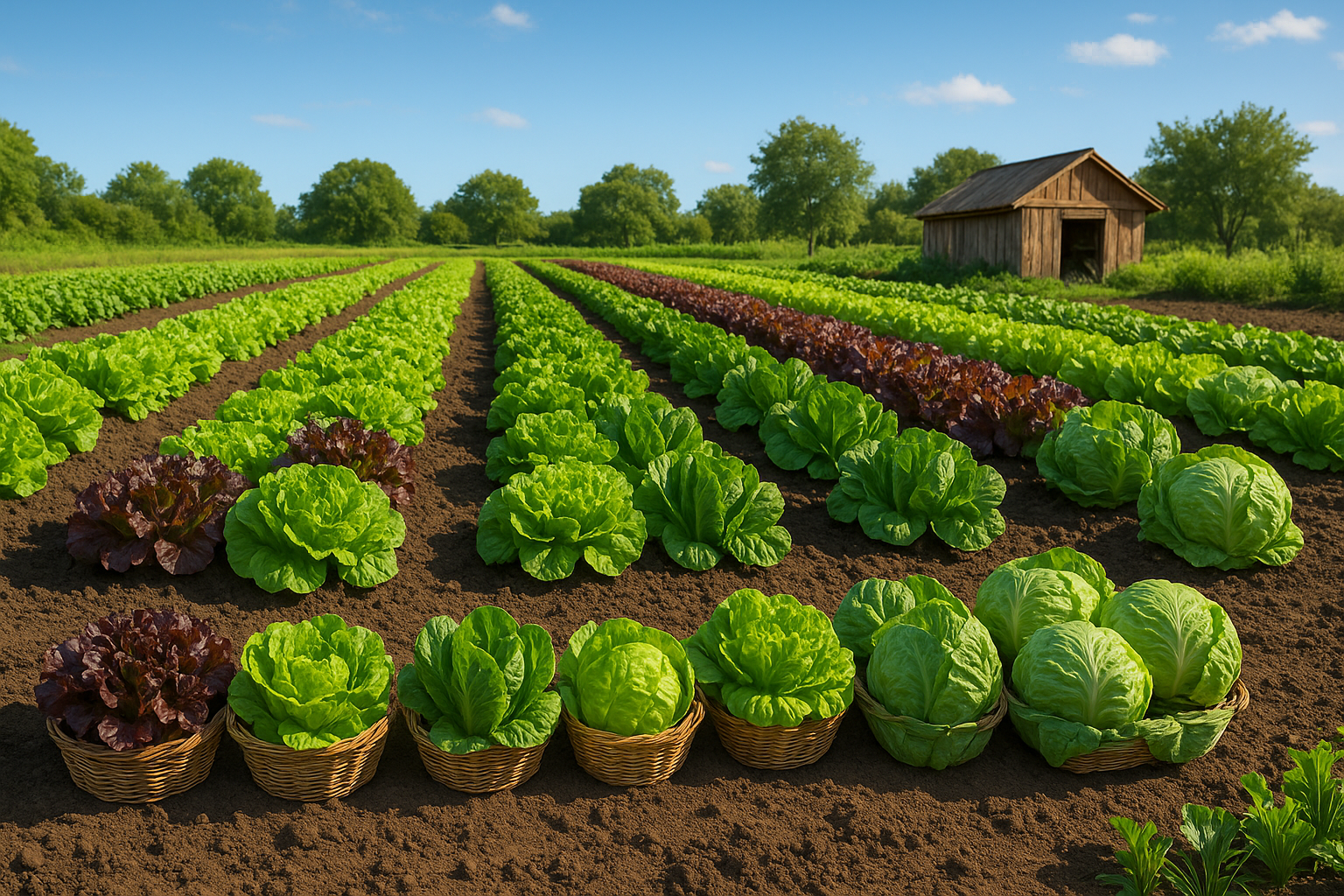Introduction
Dreaming of launching your own small lettuce farm? You’re not alone—more and more people are drawn to small-scale lettuce farming as the demand for fresh, local produce at farmers markets continues to grow. Crisp, quick to harvest, and always in demand, lettuce is the perfect starting point for aspiring growers who want to supply their community with healthy, top-quality greens.
Whether you have a backyard plot or a modest piece of land, lettuce offers a fantastic yield in a small space and appeals to health-conscious shoppers willing to pay a premium for just-picked produce. The best part? Starting a small lettuce farm doesn’t require a huge upfront investment or advanced farming knowledge.
In this post, we’ll guide you through everything—from choosing the right lettuce varieties and preparing your soil to seed starting, managing pests naturally, and marketing your harvest at local farmers markets. You’ll find time-saving tips from real growers, advice on direct-sales strategies, and smart ways to maximize your success—even if you’ve never farmed before.
If you want a simple, profitable venture that connects you to your local food scene, this guide to starting a small lettuce farm is your first step toward a greener, fresher future.
Choosing the Right Lettuce Varieties
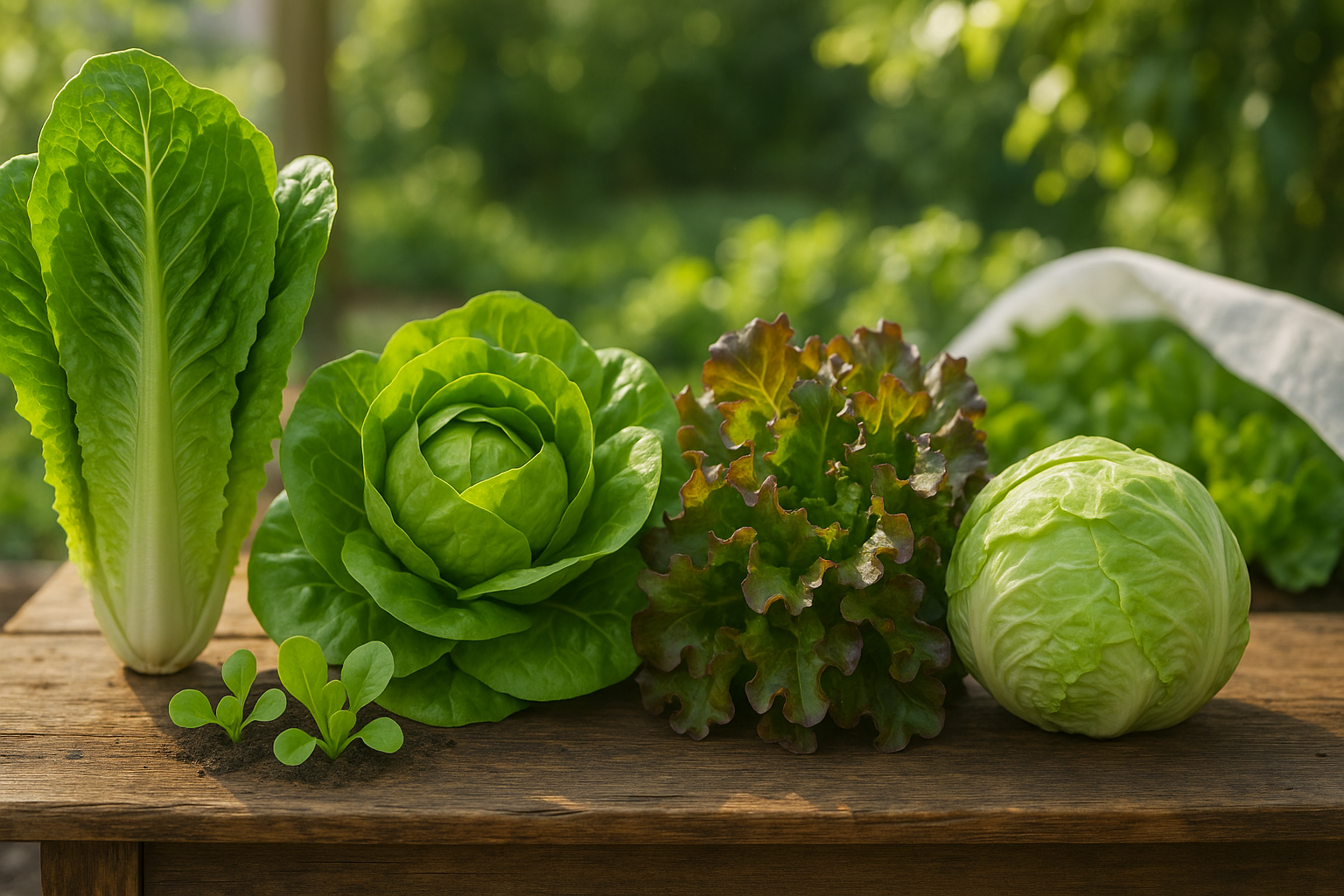
Selecting the right lettuce varieties can make all the difference when growing for market, both in terms of customer satisfaction and profitability. Popular types like romaine, butterhead, oakleaf, and iceberg each have unique qualities that can appeal to different customer tastes and needs.
Romaine, with its upright, crisp leaves and sturdy texture, is prized for classic Caesar salads and sandwiches. Plus, it stands up well to handling and transport, making it a market favorite. Butterhead lettuces, including Boston and Bibb, feature tender, buttery leaves and a mild, sweet flavor. Their compact heads are visually appealing and perfect for gourmet salad mixes or as edible wraps.
Oakleaf varieties, recognized by their deeply lobed leaves, bring vibrant green or red hues to displays, offering both visual flair and a soft, delicate mouthfeel ideal for mixed salad bags. Iceberg lettuce is another staple, notable for its round, crunchy heads and high water content; it remains popular for its crisp texture in burgers and salads, though it is less flavorful than specialty types.
When choosing which varieties to plant, consider your local climate—some lettuce types are better suited to cooler temperatures, while others, like certain romaines or summer crisps, tolerate heat and resist bolting. Additionally, mixing several varieties in your offerings can boost market appeal by providing a rainbow of colors, differing textures, and a range of mild to robust flavors.
Taste trials at the market can also be a great way to engage customers and find out which varieties resonate most. Ultimately, the best market growers pay attention to texture, flavor, visual appeal, and adaptability, choosing diverse types that stand out on the market table while thriving in their specific growing conditions.
Setting Up Your Growing Area
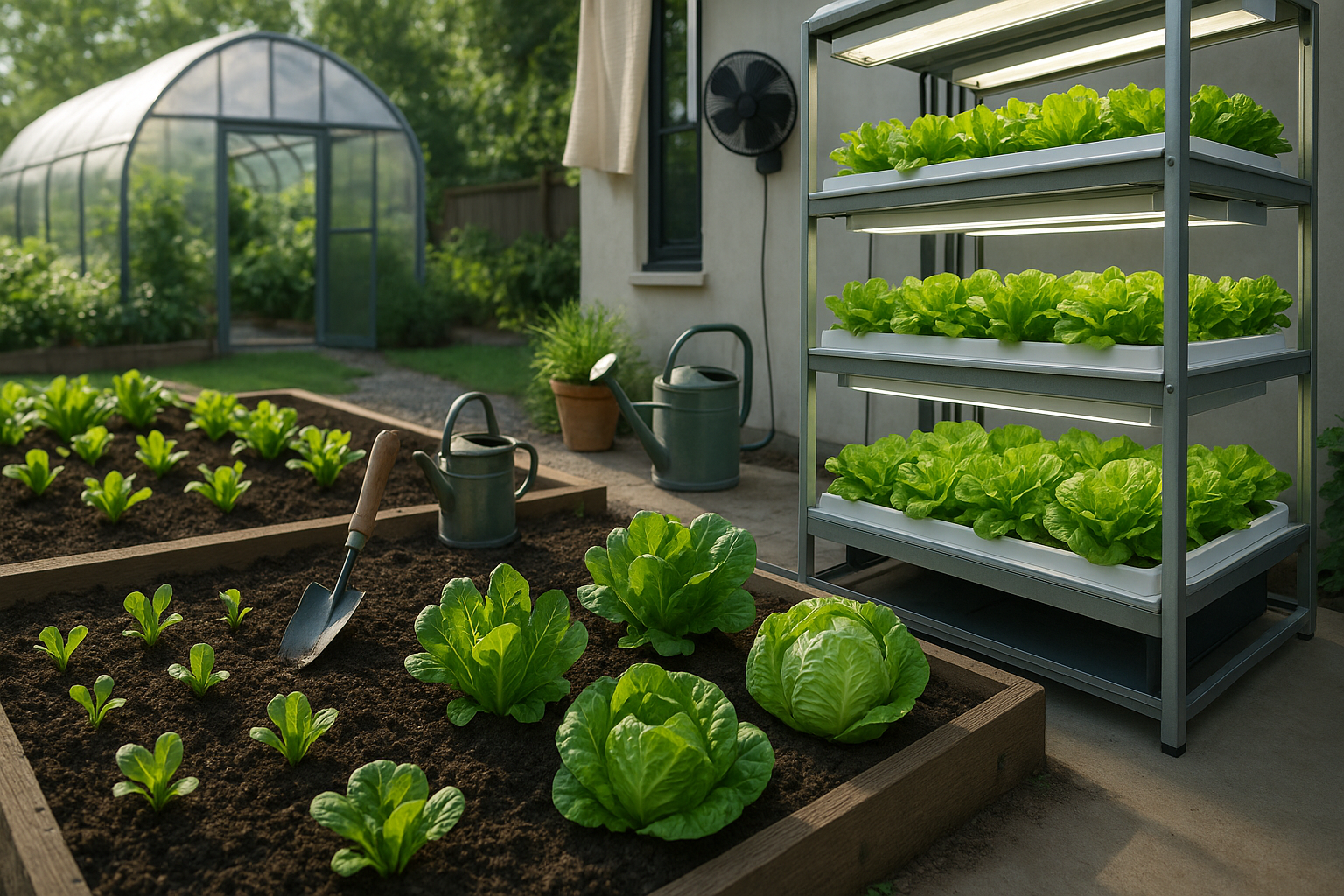
When setting up your growing area for lettuce, you have several options to consider—each with distinct benefits for small-scale growers.
Soil-Based Growing
Traditional soil-based growing is the simplest and most familiar method. It requires garden beds or containers, quality soil, basic hand tools, and consistent sunlight—ideally 6-8 hours daily. This approach is cost-effective, with startup costs mainly limited to soil amendments, seeds, and watering equipment. However, space can be a constraint, and soil-borne pests or inconsistent weather may impact growth.
Hydroponic Systems
Alternatively, hydroponic systems eliminate soil altogether, using nutrient-rich water and supportive structures like trays or towers. These systems are perfect for indoor growing or limited spaces, needing only a few square feet and access to electricity for pumps and lights. Initial investments include grow lights, water pumps, reservoirs, and hydroponic nutrients. Lettuce thrives in temperatures between 60-70°F with moderate humidity, so hydroponics gives you greater environmental control. However, it requires monitoring pH, electrical conductivity (EC), and water quality.
Vertical Farming
Vertical farming takes hydroponics further by stacking trays upwards, maximizing yield in minimal space. Though more efficient, it raises costs due to additional shelving, lighting, and sometimes automation, making it ideal for urban dwellers or those needing to grow a lot in a tight footprint.
Whichever method you choose, ensure your growing area is clean, has adequate airflow, and maintains stable lighting and temperature. For beginners, starting with container soil growing is budget-friendly, while those seeking higher efficiency or year-round growing may invest in hydroponic or vertical setups as their skills and needs develop.
Planting and Growing Lettuce
Getting the timing and technique right is essential for successful lettuce crops, whether you’re gardening outdoors or using a protected environment like a greenhouse or polytunnel. Start by sowing seeds as soon as the soil can be worked in early spring; lettuce prefers cool conditions and thrives best when daytime temperatures stay between 60–70°F (15–21°C).
If sowing directly outdoors, scatter seeds thinly in shallow drills about 1/4 inch deep and cover lightly with soil. For early crops or a continuous supply, start seeds indoors 4–6 weeks before your last expected frost and transplant once seedlings have two true leaves.
When transplanting, space loose-leaf varieties 6–8 inches apart, while heading types like romaine or iceberg need around 12 inches to develop fully. Consistent, close spacing is tempting but can lead to poor air circulation and increased disease risk, so err on the generous side.
To enjoy fresh lettuce over many weeks, practice succession planting—sow a new batch of seeds every 2–3 weeks through the cool months of spring and fall, or even year-round under cover. In greenhouses or polytunnels, keep the environment cool and well-ventilated to prevent bolting and encourage tender growth.
For all lettuce types, provide rich, well-draining soil, steady moisture (avoid waterlogging), and consider using shade cloth or row covers during unexpected heat waves. Mulching helps conserve moisture and keeps leaves clean.
Whether you’re direct-sowing outdoors or tending trays on a windowsill or under row covers, maintaining even soil moisture and appropriate spacing ensures crisp, productive plants. These approaches—coupled with timely sowings and a watchful eye for warming temperatures—mean you can enjoy a steady harvest of lettuce, from baby greens to full heads, almost any time of year.
Caring for Your Lettuce Crop
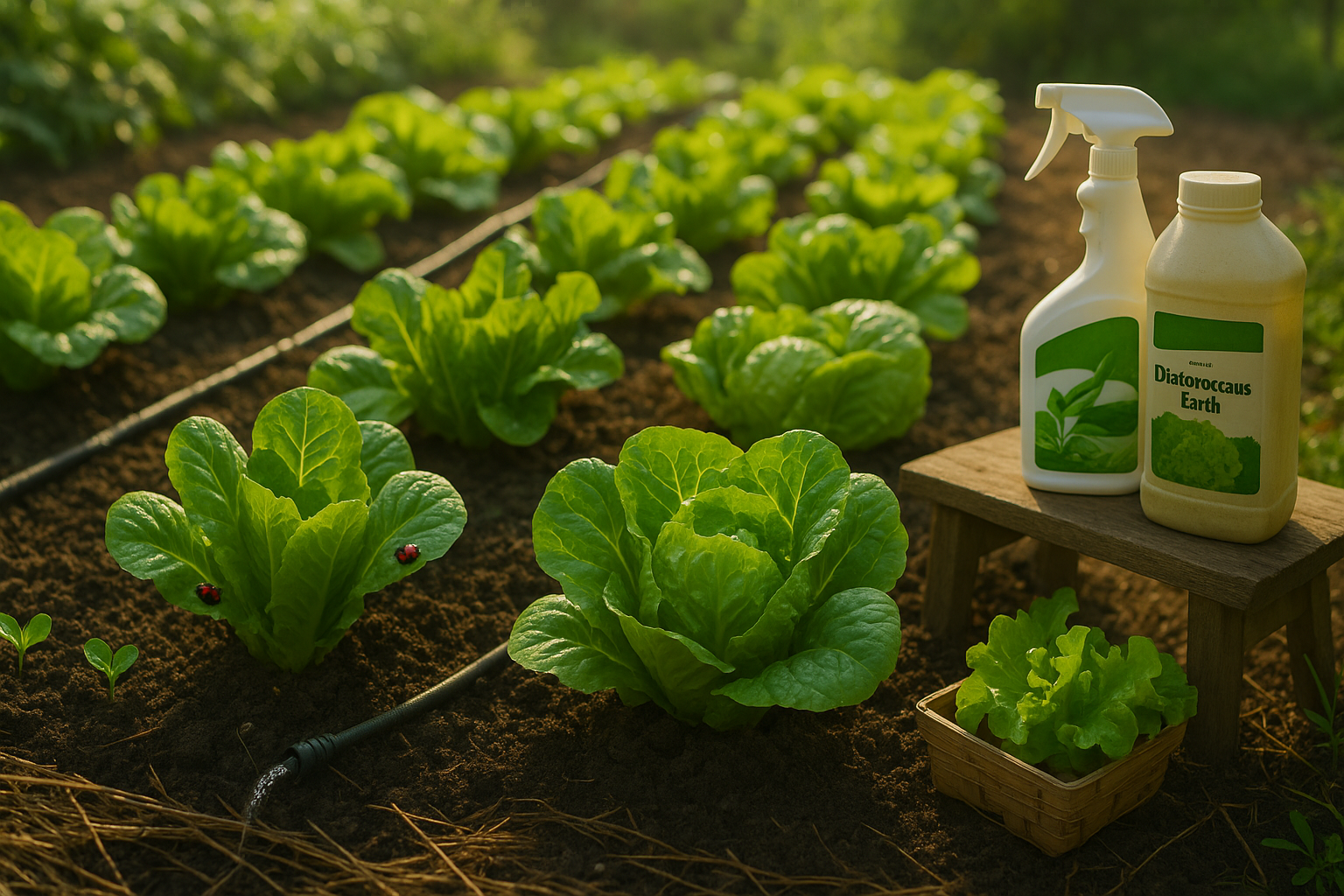
Caring for your lettuce crop starts with consistent, even watering—lettuce has shallow roots and thrives best in moist (not soggy) soil. Using drip irrigation or watering early in the morning helps prevent disease by keeping leaves dry.
Enrich your soil with compost before planting, and add a balanced organic fertilizer every two to three weeks to promote healthy growth.
Managing Pests
Lettuce is prone to pests like aphids and slugs. Try introducing beneficial insects such as ladybugs, using row covers, or spreading diatomaceous earth as organic deterrents.
Regularly inspect your crop for early signs of trouble such as yellowing leaves or insect damage—catching problems early is key to successful intervention.
Disease Prevention
Downy mildew and leaf spot are common diseases. Promote airflow by spacing plants properly and choosing disease-resistant varieties if possible.
For organic disease management, apply neem oil spray or compost tea as a preventative measure.
Additional Tips
- Keep detailed notes or photos of your plants weekly to spot slow growth or irregularities.
- If you see heads bolting (sending up a flower stalk too soon), it’s often due to heat stress—use shade cloth when temperatures rise to extend your harvesting window.
- Consistently monitor for pests, maintain soil health with organic matter, and adjust for weather challenges to boost your lettuce quality and market appeal.
By following these practices, you can meet the increasing consumer demand for organically grown produce while successfully caring for your lettuce crop.
Harvesting and Preparing Lettuce for Market
Knowing when to harvest lettuce is crucial for top quality and shelf life. Look for heads or leaves that have reached their mature size—most lettuce varieties are ready when the heads feel firm but not hard, and the outer leaves are crisp and vibrant. Timing also matters; early morning is ideal, as the leaves are cool and fully hydrated, which keeps them fresher.
To harvest, use a sharp knife or clean garden shears to cut the heads at the base, being careful not to bruise or tear the leaves. Handle each head gently to avoid crushing or damaging the lettuce, which can accelerate spoilage. Immediately after cutting, remove any outer leaves that look wilted or damaged and place the lettuce in shaded containers or coolers to reduce field heat.
Rinse harvested lettuce thoroughly with cool, clean water—using a wash tub or gentle spray—to remove dirt and debris. For an extra level of food safety, a mild food-safe sanitizer can be used according to guidelines. Let the leaves drain or spin dry in a salad spinner, as excess moisture can lead to faster spoilage.
When packaging, use clean, breathable bags or clamshell containers to maintain humidity while allowing airflow, which reduces the risk of rot. Store lettuce at 32–36°F (0–2°C) with high humidity, stacking bags or boxes loosely to avoid crushing.
Keeping your tools, hands, and storage areas clean at every step helps you meet food safety standards and deliver the crisp, vibrant lettuce that market buyers love.
Selling Lettuce at Local Farmers Markets
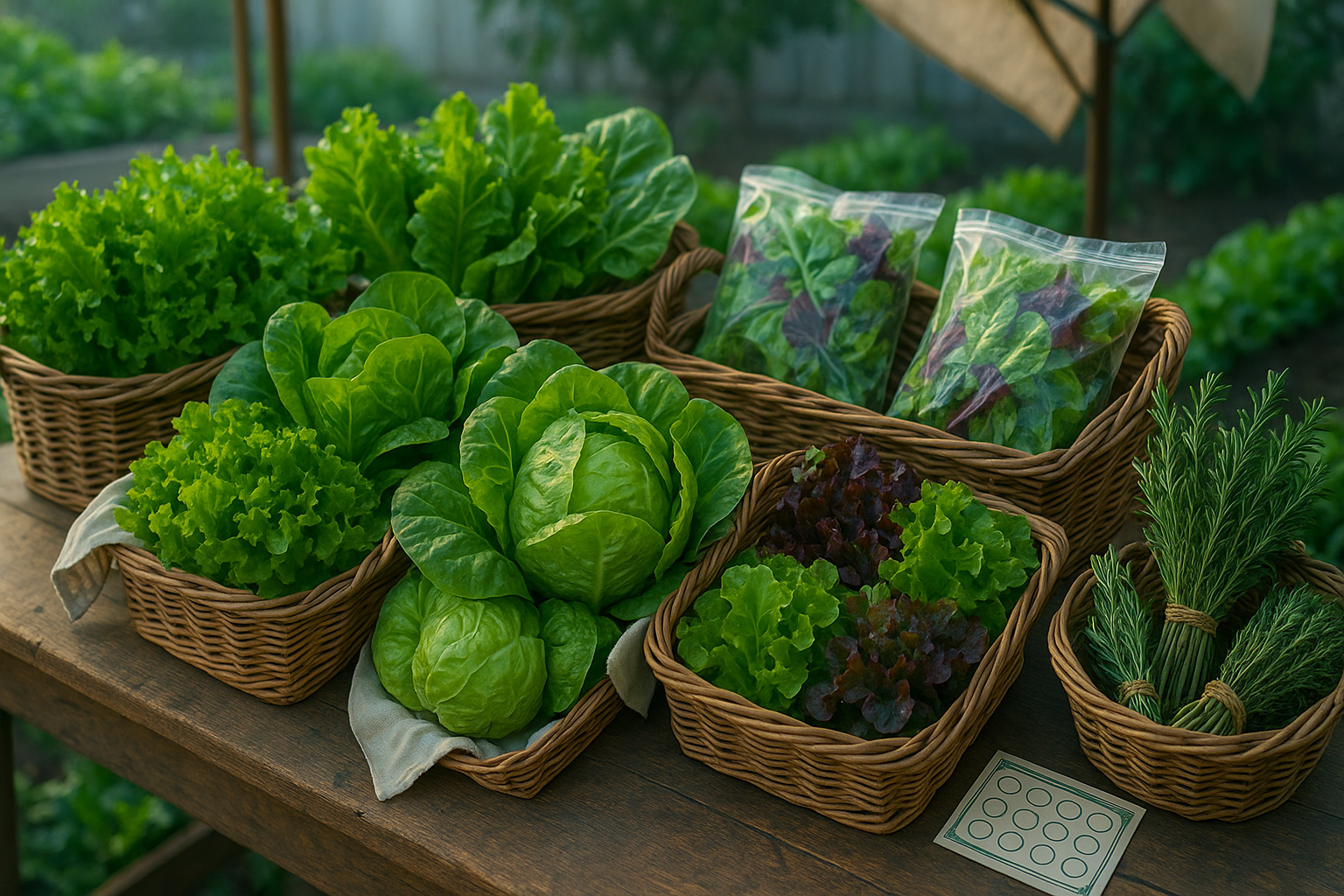
Selling lettuce at local farmers markets is more than just bringing your harvest to the table—it’s about creating an inviting display and providing a fresh, memorable experience for customers.
Start by keeping your lettuce crisp throughout the day: bring a cooler with ice packs, mist the greens regularly with a spray bottle, and shield them from direct sunlight using a canopy or table umbrella. Arrange heads or bags of lettuce in baskets lined with clean cloths for a rustic, appealing look. Stack them loosely to avoid bruising and to entice shoppers with a sense of abundance.
When it comes to pricing, scout your competition beforehand to stay competitive, and consider offering tiered deals—like “$3 each or 2 for $5”—to encourage bulk purchases. Clear, handwritten labels can add a personal touch; include the lettuce’s variety and maybe even a short note about its flavor or usage (“ideal for crisp salads!”).
Bundling lettuce with other items, such as a “salad kit” paired with local herbs or edible flowers, can boost sales and introduce customers to your other products. Build loyalty by greeting regulars by name, offering occasional samples, and starting a simple punch card (“buy 5, get 1 free”).
Encourage feedback with a suggestion jar or social media shout-out, and be open to special requests. Every positive interaction not only builds a repeat customer base but also spreads word-of-mouth, ensuring your lettuce stand is always buzzing with happy shoppers.
Conclusion
Starting your own small lettuce farm can be a rewarding and flexible venture, whether you’re growing a few heads for your family or enough to sell at a local market. Experiment with different varieties—romaine, butterhead, or crisphead—to see what thrives in your area and excites your customers.
Selling locally means fresher lettuce, lower food miles, and stronger connections with your community. Sharing your harvest supports healthy eating and helps neighbors appreciate local agriculture. Don’t be afraid to try new sales approaches, like farmers’ markets or farm-to-table partnerships—the journey is as enriching as the harvest itself. Give it a try!
